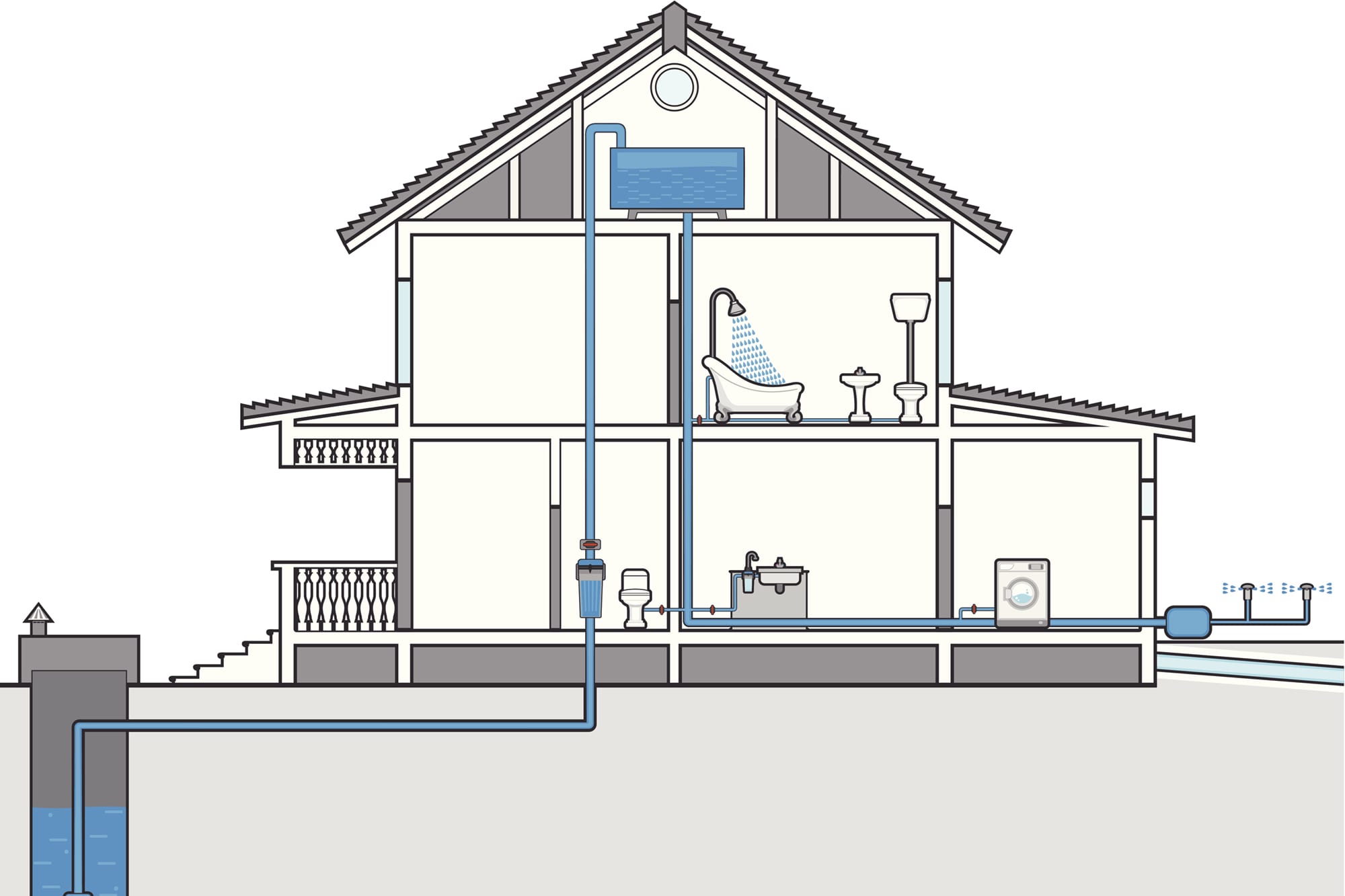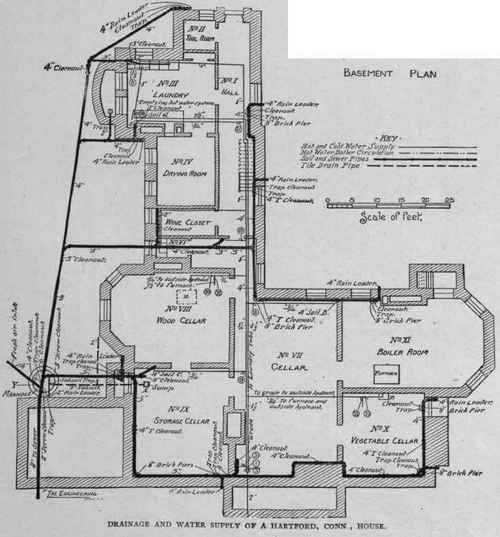What You Need to Know About Your Home's Plumbing System Anatomy
Explore NowAre you currently on the lookout for information concerning Exploring Your Homes Plumbing Anatomy?

Understanding how your home's plumbing system works is vital for every single homeowner. From providing tidy water for alcohol consumption, food preparation, and bathing to safely eliminating wastewater, a well-kept pipes system is crucial for your family's health and wellness and convenience. In this thorough overview, we'll discover the detailed network that makes up your home's plumbing and offer suggestions on maintenance, upgrades, and handling common problems.
Introduction
Your home's pipes system is greater than simply a network of pipelines; it's an intricate system that ensures you have access to clean water and effective wastewater elimination. Understanding its parts and just how they collaborate can assist you stop expensive repair services and make certain every little thing runs efficiently.
Standard Parts of a Plumbing System
Pipes and Tubing
At the heart of your plumbing system are the pipes and tubes that lug water throughout your home. These can be made of numerous materials such as copper, PVC, or PEX, each with its advantages in terms of sturdiness and cost-effectiveness.
Components: Sinks, Toilets, Showers, and so on.
Fixtures like sinks, commodes, showers, and bath tubs are where water is made use of in your house. Recognizing just how these components link to the pipes system aids in detecting troubles and preparing upgrades.
Shutoffs and Shut-off Points
Valves manage the flow of water in your pipes system. Shut-off valves are essential during emergency situations or when you need to make repair work, allowing you to isolate parts of the system without interfering with water circulation to the whole home.
Water System System
Main Water Line
The main water line connects your home to the metropolitan water or an exclusive well. It's where water enters your home and is distributed to various fixtures.
Water Meter and Pressure Regulatory Authority
The water meter steps your water usage, while a stress regulator ensures that water flows at a safe pressure throughout your home's plumbing system, stopping damage to pipelines and fixtures.
Cold Water vs. Hot Water Lines
Understanding the distinction in between cold water lines, which supply water directly from the major, and warm water lines, which bring warmed water from the water heater, aids in fixing and preparing for upgrades.
Drain System
Drain Water Lines and Traps
Drain pipelines bring wastewater far from sinks, showers, and bathrooms to the sewer or sewage-disposal tank. Traps stop drain gases from entering your home and also catch debris that can cause obstructions.
Ventilation Pipelines
Air flow pipes enable air into the drain system, preventing suction that might reduce drain and cause traps to vacant. Proper air flow is important for keeping the stability of your pipes system.
Importance of Proper Drain
Ensuring appropriate drain prevents backups and water damages. Routinely cleansing drains and preserving catches can prevent expensive fixings and prolong the life of your pipes system.
Water Heating Unit
Sorts Of Water Heaters
Water heaters can be tankless or standard tank-style. Tankless heating units warmth water on demand, while storage tanks save heated water for instant usage.
Updating Your Plumbing System
Factors for Updating
Upgrading to water-efficient components or changing old pipes can enhance water high quality, reduce water costs, and increase the value of your home.
Modern Plumbing Technologies and Their Advantages
Discover technologies like clever leak detectors, water-saving bathrooms, and energy-efficient hot water heater that can conserve money and decrease environmental influence.
Expense Factors To Consider and ROI
Compute the upfront costs versus long-term cost savings when considering pipes upgrades. Several upgrades spend for themselves through reduced utility bills and fewer repair work.
Just How Water Heaters Attach to the Plumbing System
Understanding exactly how water heaters link to both the cold water supply and hot water distribution lines helps in diagnosing issues like inadequate hot water or leaks.
Maintenance Tips for Water Heaters
On a regular basis flushing your water heater to eliminate sediment, inspecting the temperature settings, and examining for leakages can expand its lifespan and improve power effectiveness.
Typical Plumbing Concerns
Leakages and Their Reasons
Leakages can happen because of aging pipes, loose installations, or high water pressure. Attending to leakages quickly avoids water damage and mold development.
Clogs and Clogs
Obstructions in drains pipes and toilets are frequently caused by purging non-flushable things or a build-up of oil and hair. Using drain displays and being mindful of what goes down your drains pipes can prevent obstructions.
Indications of Plumbing Troubles to Look For
Low water stress, sluggish drains, foul odors, or uncommonly high water costs are indicators of possible pipes problems that should be attended to quickly.
Pipes Maintenance Tips
Normal Examinations and Checks
Arrange annual pipes examinations to catch issues early. Seek indications of leaks, deterioration, or mineral build-up in taps and showerheads.
DIY Upkeep Tasks
Easy jobs like cleaning tap aerators, checking for commode leakages using color tablets, or protecting exposed pipelines in cold environments can avoid significant plumbing concerns.
When to Call a Professional Plumber
Know when a plumbing concern requires professional experience. Attempting intricate repair work without correct knowledge can cause even more damages and greater repair work prices.
Tips for Reducing Water Usage
Straightforward practices like dealing with leaks promptly, taking shorter showers, and running complete lots of laundry and meals can conserve water and reduced your utility expenses.
Eco-Friendly Plumbing Options
Consider lasting pipes materials like bamboo for flooring, which is durable and environmentally friendly, or recycled glass for kitchen counters.
Emergency situation Preparedness
Steps to Take During a Plumbing Emergency situation
Know where your shut-off valves lie and just how to switch off the water supply in case of a burst pipe or major leakage.
Significance of Having Emergency Situation Calls Handy
Maintain call details for neighborhood plumbings or emergency situation solutions conveniently offered for fast feedback throughout a pipes dilemma.
Ecological Effect and Preservation
Water-Saving Components and Devices
Mounting low-flow taps, showerheads, and bathrooms can substantially minimize water use without compromising efficiency.
DIY Emergency Fixes (When Appropriate).
Short-term repairs like making use of air duct tape to spot a dripping pipeline or positioning a pail under a dripping tap can decrease damages till a specialist plumbing professional gets here.
Verdict.
Understanding the anatomy of your home's plumbing system empowers you to maintain it properly, conserving money and time on repair services. By complying with routine maintenance regimens and remaining notified regarding modern plumbing technologies, you can guarantee your pipes system operates efficiently for several years ahead.
HOW YOUR PLUMBING SYSTEM WORKS
Which Pipes Do What?
Blue lines = fresh water supply entering the building Red lines = hot water supply entering the building Grey lines = pipes carrying waste away from the building and venting pipes carrying gases away from the building (through the roof) YOUR MAIN PLUMBING SYSTEMS
There are two main plumbing systems that support your home s basic plumbing needs one that brings clean water into your home, and one that sends dirty water away from your home. Connected to the toilet, bath, shower, and other faucets in your home, these two systems keep your water flowing in the right directions.
ACCESSING FRESH WATER
Fresh and clean water is brought into your home through the main water supply line . Filtered through one pipe, this water is pressured to flow into the various fixtures in your home at any given time.
This water can be sourced from a well located on your property, a pond or river (mostly cottages), or, as in most cases, from the city s municipal water treatment centre. However, it is important to note that water that is untreated, such as the water siphoned from ponds or rivers, may not be safe to drink. Personal water supplies always need to be treated for hardness and contaminants before consumed.
MUNICIPAL WATER SUPPLIES
Improve taste and odour Remove sediment Eliminate hardness Reduce chlorine COLD WATER SUPPLY VS. HOT WATER SUPPLY
Cold water flows into your home or building through the service line, which then distributes hot or cold water to your fixtures. This line is most commonly run through a central column that runs floor to floor. Hot water runs in short and straight pipes as the longer the pipeline, the more heat that will be lost in the transfer. Having shorter pipes also allows residents to access hot water more quickly.
WASTE WATER SYSTEM
Your wastewater system is divided into two parts pipes that send wastewater away from your home and venting pipes that send sewer gas away from your home. Sewage water travels through pipes that flush the water and waste towards local sewers that are operated and managed by your city or town. Most sewer systems rely on gravity to move the wastewater to where it needs to go.
The further away from your toilet or sink, the larger wastewater pipes become. This allows for waste to be disposed of from various parts of your home or business at once without pipe blockages. The angle and flow of these pipes are also essential for keeping your waste pipes clear of build up.
https://harrisplumbing.ca/how-your-home-plumbing-system-works/

Hopefully you liked our article about Plumbing Installation 101: All You Need to Know. Thank you so much for taking the time to read our content. Sharing is caring. Helping others is fun. Thank you so much for going through it.
Call Today